October 31, 2025
What Is Experience Design?
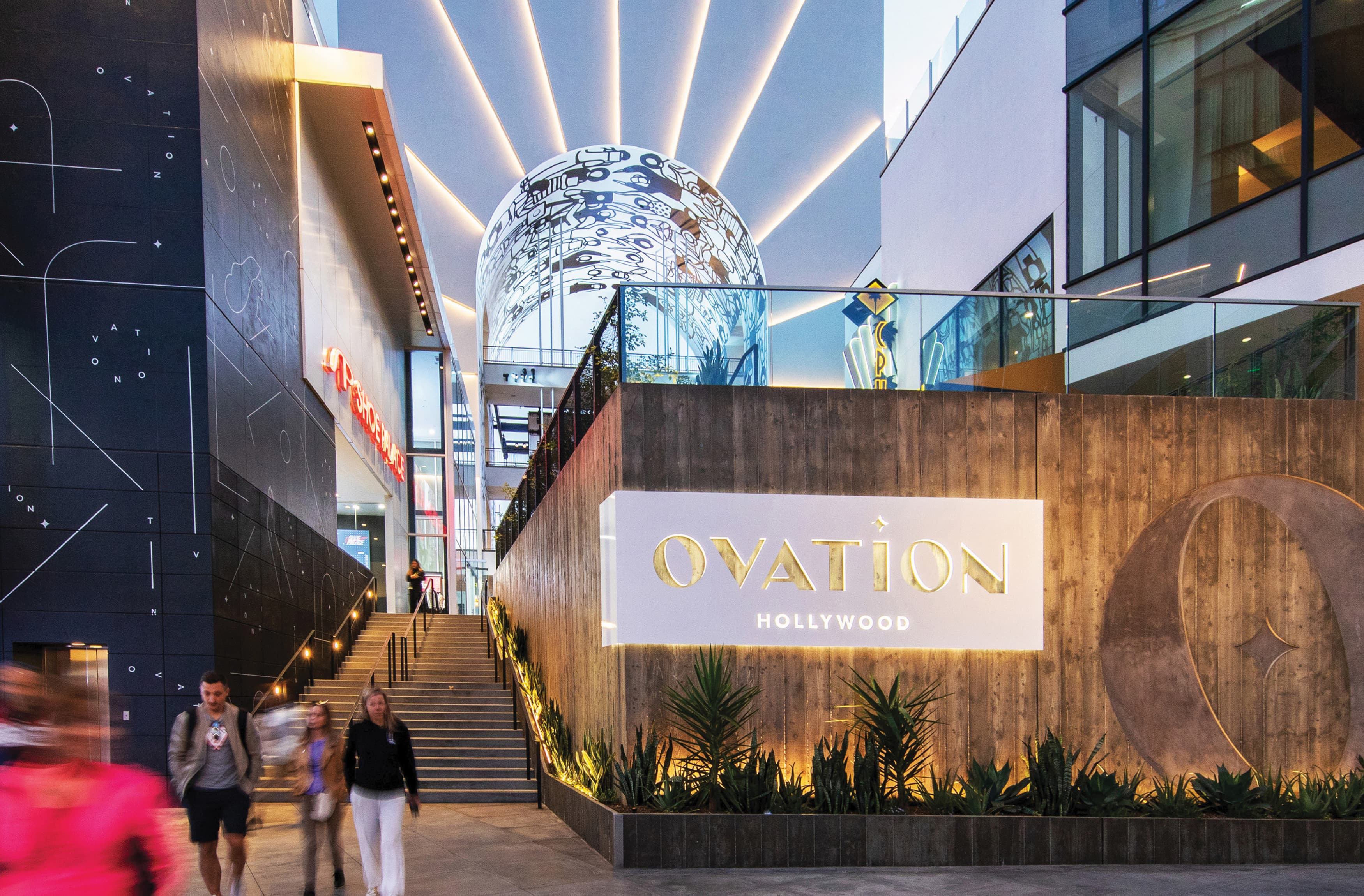
October 31, 2025

The feeling of knowing exactly where to go in an unfamiliar building, the way a space makes you feel welcomed or energized, the visual story that unfolds as you move through an environment—these moments rarely happen by accident. They emerge from the thoughtful practice of experience graphic design (XGD), a sophisticated discipline that choreographs and orchestrates how people interact with the built environment.
This multidisciplinary field seamlessly integrates graphic design, architecture, art, lighting, landscape, and numerous other elements to create immersive spatial experiences. Experience design has evolved dramatically from its origins in traditional signage and wayfinding, transforming into comprehensive environmental experiences that shape how people interact with and perceive their surroundings. This evolution represents a fundamental shift from purely functional elements designed solely to direct or inform, to holistic and branded experiences that tell stories, evoke emotions, and create lasting impressions.
Experience graphic design (XGD) is interdisciplinary, combining graphic design, architecture, art, lighting, landscape, interior design, and more to produce spatial experiences that are immersive, interactive, and meaningful. It transforms ordinary spaces into extraordinary experiences, creating connections between people and places.
The industry originally favored the term “environmental graphic design,” but it has since fallen out of favor in some circles due to the mistaken association with eco-friendly and green initiatives. The field has grown in more than just name: what was once largely thought of as just traditional signage and wayfinding has evolved into comprehensive experiences in the built environment.
Today, experience design encompasses holistic experiences that shape how people interact with and perceive their surroundings. It enhances our experience of a place by telling its story, eliciting emotion, and creating lasting memories.
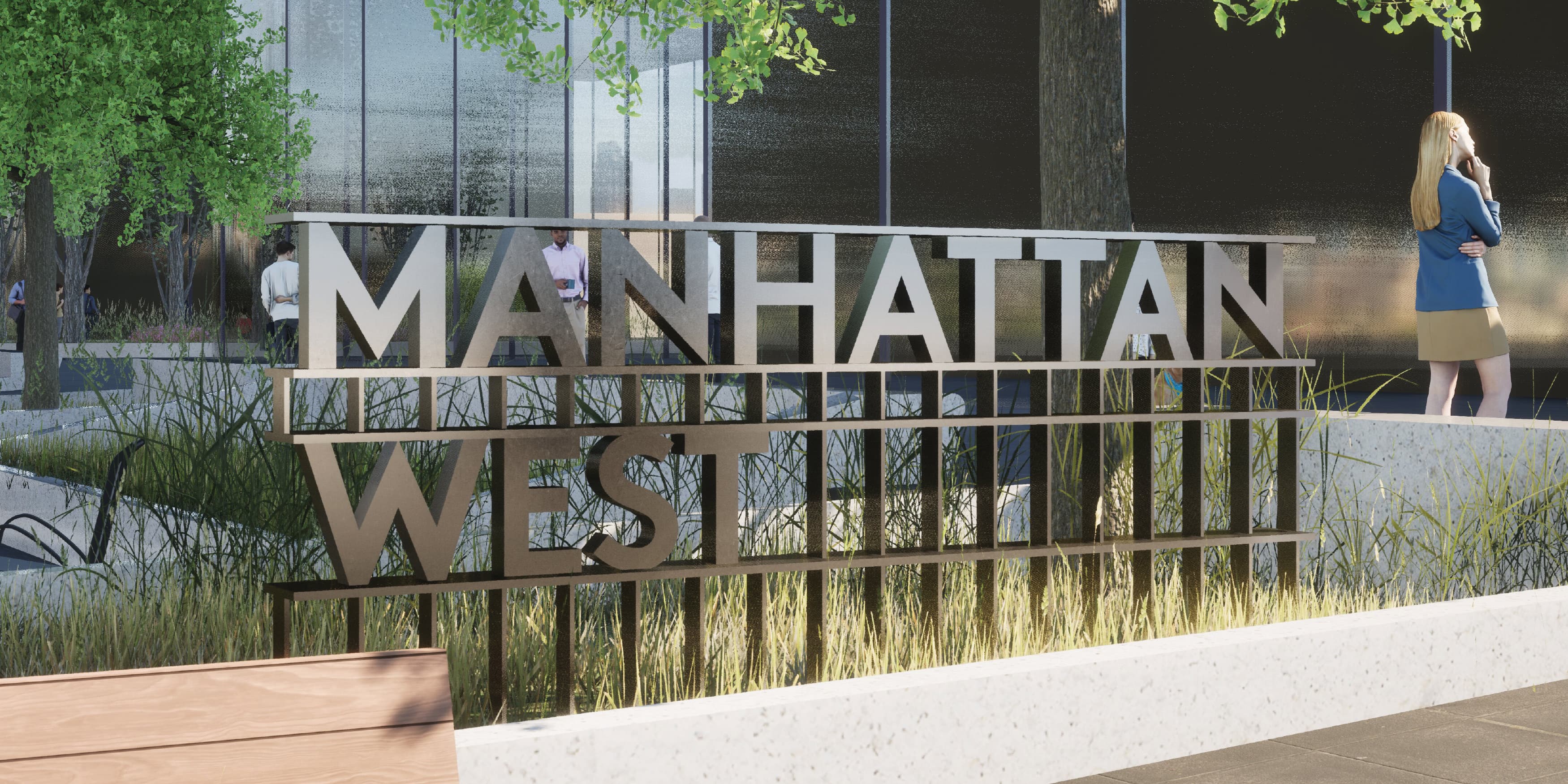

Manhattan West, Client: Brookfield Properties
To help understand what experience design (XGD) is, it can be useful to see how it compares to other design fields you may be more familiar with—and how it brings these disciplines together.
Graphic Design: Traditional graphic design tends to be two-dimensional, appearing in print and digital media. While both disciplines share fundamental design concepts—such as typography, color theory, visual hierarchy, and composition—experience design applies them to physical spaces rather than flat surfaces. Applied to the physical world, experience design is 3D—arguably even 4D as users move through space over time. Where graphic design might produce a static logo or brochure, experience design builds on that branding to create dynamic visual experiences that unfold as people navigate through built environments, adapting to different viewpoints, distances, and contexts.
Architecture: While experience graphic design complements the architecture in the built environment, it is not the same thing. Architects design environments, physical structures and spaces, focusing on form, function, structural integrity, and spatial relationships. Architecture strives to synthesize art, science, geometry, engineering, and ultimately design, along with integrating many disciplines to create environments that embody the values of their inhabitants, community, and its stakeholders. Experience designers enhance those environments by layering storytelling, branding, graphic design, placemaking, and wayfinding systems in a cohesive vision that improves user experience within the space. The many successful projects emerge from close collaboration between these disciplines, where architectural intent and experience design work together to create unified, functional, and memorable spaces.
Landscape Design: Landscape design focuses on the planning and design of outdoor spaces, including parks, gardens, campuses, and urban environments, with emphasis on natural elements, plant materials, topography, and sustainable systems. Landscape designers create intersectional pathways for art and science to commingle, forming a rich synergy between a place’s intrinsic natural qualities and its evocative potential. experience graphic design complements landscape design by adding visual communication layers that help people understand, navigate, and engage with these outdoor environments. While landscape designers shape the built environment through plantings, hardscaping, and site planning, experience designers overlay interpretive elements, wayfinding systems, educational graphics, and cultural markers that enhance the user's understanding and appreciation of the landscape. Together, these disciplines create outdoor spaces and emotional terrains that are both environmentally thoughtful and experientially rich.


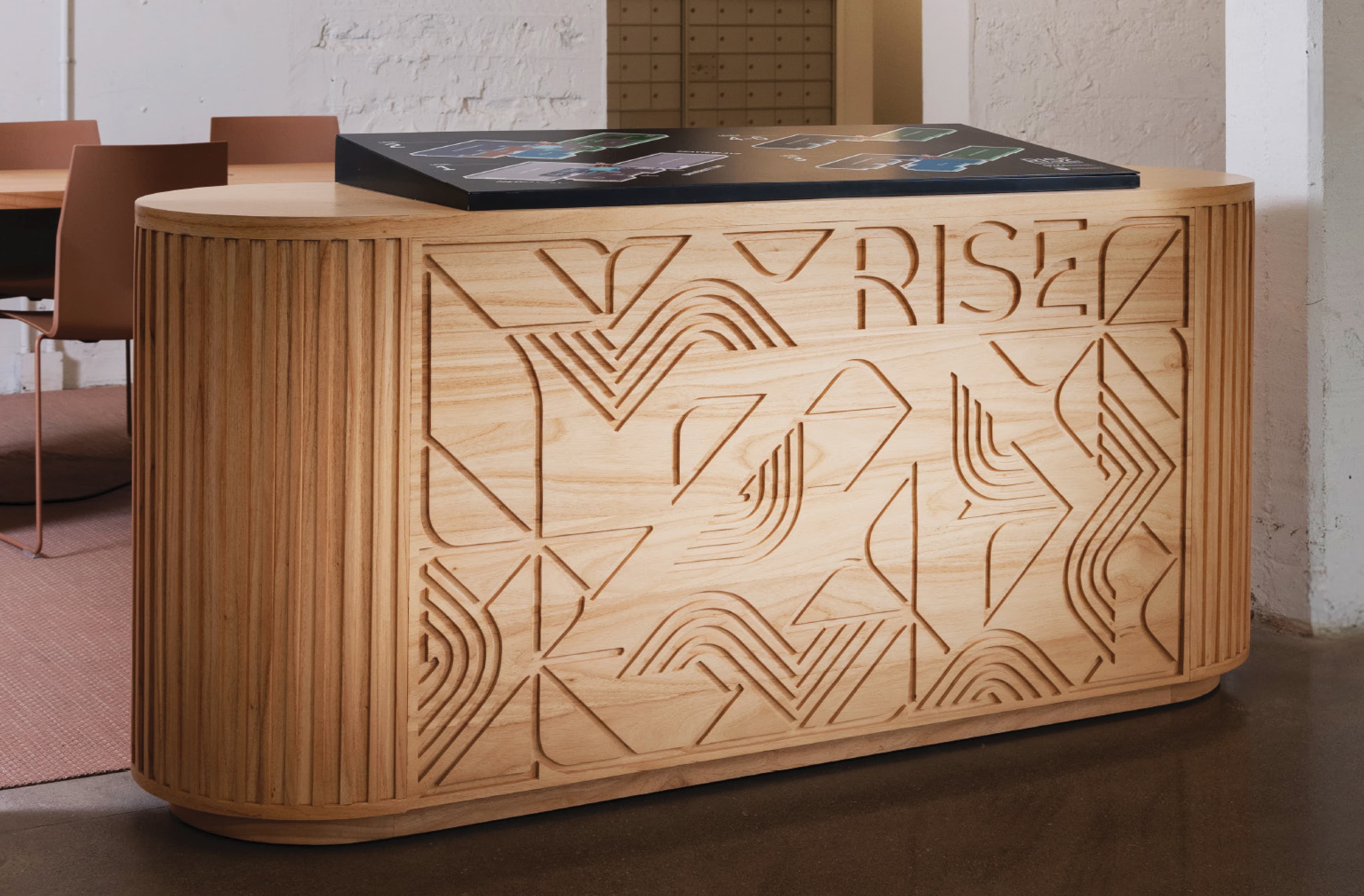
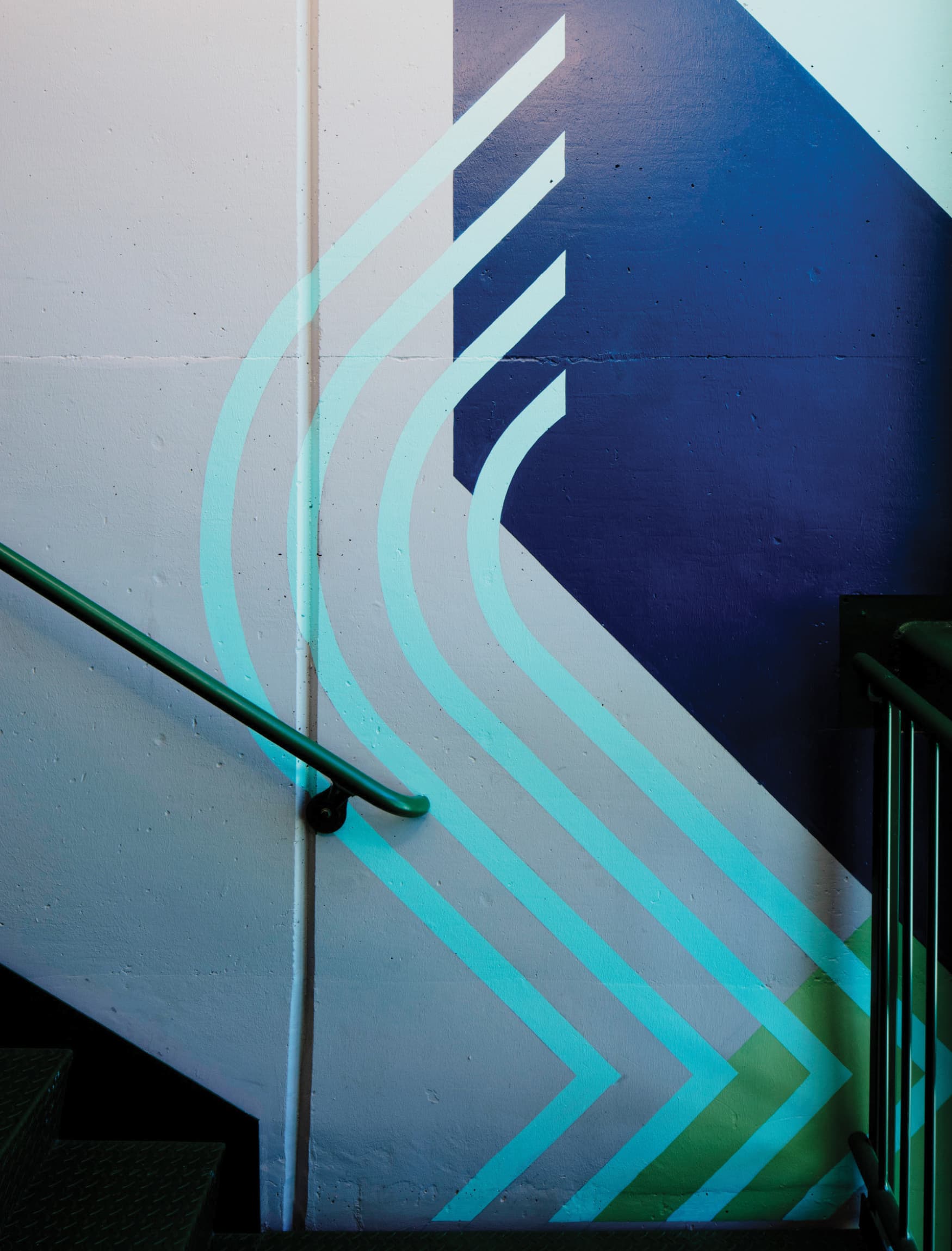
Atherton Rise, Client: Hunt Development Group
The ability of experience design to touch so many different aspects of design is what makes it truly unique, bringing these elements together into holistic experiences rooted in the built environment. Experience graphic design serves as the connective tissue that weaves together these various disciplines, creating unified experiences that are greater than the sum of their parts. It consists of the vision, narrative, story, and brand expression that transforms built environments from mere containers into meaningful places.
This integrative approach requires practitioners to understand concepts from multiple fields while maintaining focus on the human experience. Rather than designing standalone elements, experience designers orchestrate comprehensive narratives that unfold through space and time, ensuring that every design element—from large-scale architectural graphics to detailed wayfinding signs—contributes to a cohesive story that guides, informs, inspires, and connects people to places.
In our increasingly digital world, people are rediscovering their fundamental need for meaningful connection with physical spaces and one another. Today's users have greater expectations from their built environments, seeking places that do not just function but inspire, bring communities together, and create a sense of meaning and purpose.
Experience graphic design plays a crucial role in fulfilling those desires. It allows us to create gathering spaces like public parks that draw people out of their boxes, both physically, emotionally and mentally. These experiences in the built environment encourage people to venture beyond their homes and screens into places that foster real human connection.
At its most powerful, experience design creates places where people genuinely want to be—spaces that serve both individual well-being and collective connection. There are both tangible and intangible benefits to introducing experience design into the built environment, including:
Stronger brand identity
Enhanced navigation and accessibility
Improved user experience
Connection to community and culture
Economic impact


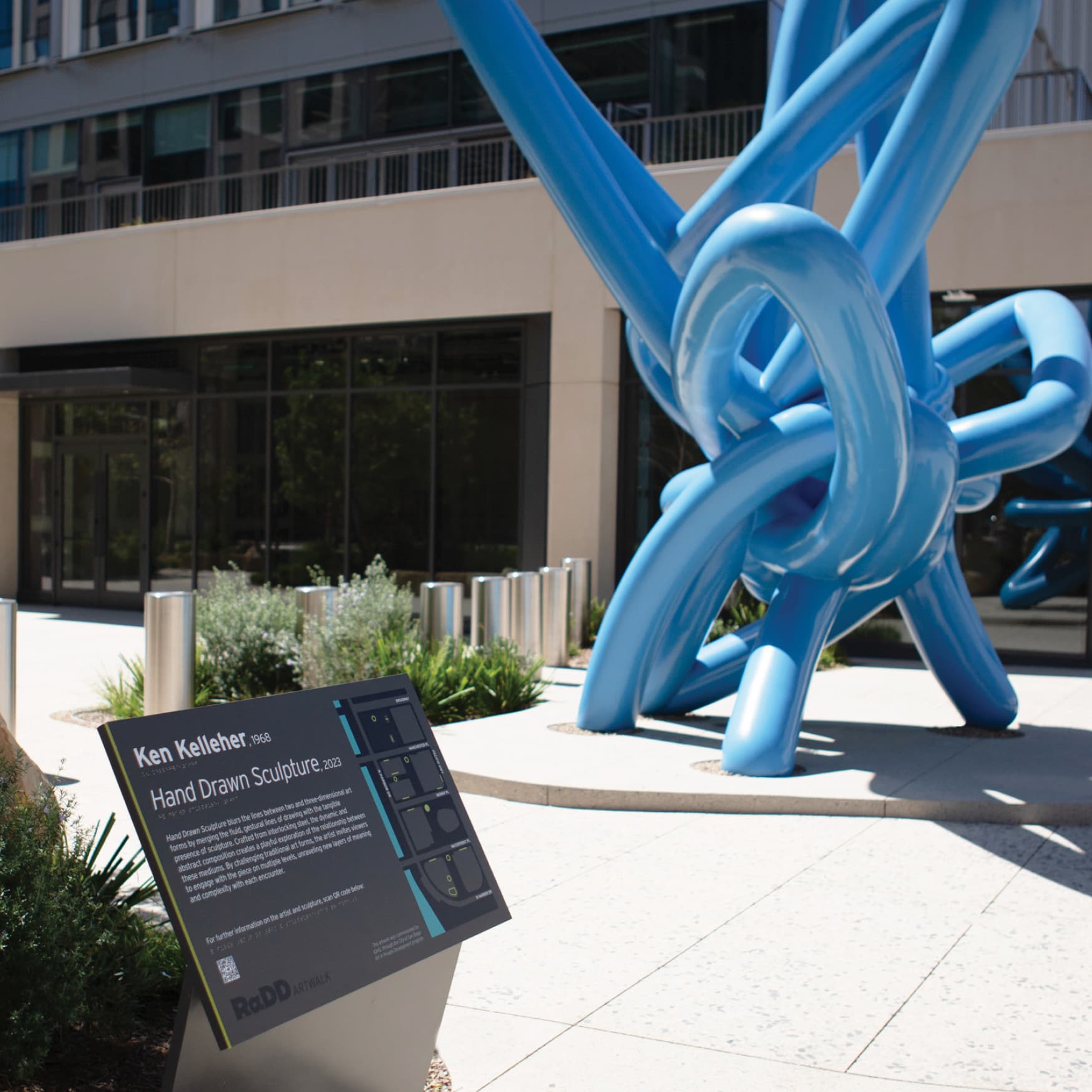
RaDD: Research & Development District, Client: IQHQ, Waltzing Matilda by Alice Aycock (top), Hand Drawn Sculpture by Ken Kelleher (bottom right)
There are several core principles of experience graphic design (XGD) that help make these projects successful:
Balancing Form and Function: Through a combination of technical expertise and creative vision, our experience graphics serve multiple purposes at once. They can add visual interest, support wayfinding, share information, create a sense of place, and reinforce brand identity. Experience graphic design contributes to the function, sensory experience, and emotional resonance of a place. The most successful designs achieve this balance seamlessly, where aesthetic beauty enhances usability rather than competing with it. Every element is carefully considered to ensure it serves both a practical and narrative purpose.
Meeting Human Needs: The objective of experience design is to meet people’s needs for a space on multiple levels. This starts with satisfying basic needs like clear navigation and accessibility, after which users can appreciate the elements that support their psychological and emotional needs. By addressing the full spectrum of needs, experience graphics make the built environment more welcoming, inclusive, functional, enjoyable, and memorable for everyone involved—from first-time visitors who need clear directions to regular occupants who benefit from deeper layers of meaning and connection in their environment.
Spatial Storytelling: A key element of experience design is to tell the story of the space through the user’s experience with it. Stories about the site’s history, inhabitants, culture, purpose, and vision for the future are woven throughout the built environment, giving users a deeper understanding of and connection to place. These narratives unfold gradually as people move through and interact with the space, creating moments of discovery and revelation that make each visit unique. Such spatial storytelling elements work together to create a cohesive narrative that resonates with diverse audiences while honoring the authentic character of the location.
In addition, there are a few common themes of experience design to consider within projects as well:
Memorable Experiences: Experience graphic design prioritizes the user experience of a place, ensuring that it is immersive, interactive, and engaging. Users are looking for more than just passive observation—it takes multisensory engagement and active participation to make an experience memorable. Modern technology enables dynamic content that responds to user presence and behavior, while analog elements provide tactile and spatial experiences that digital tools alone cannot replicate. This combination of high-tech and high-touch elements creates rich, layered environments that invite exploration and reward curiosity.
Meaningful Connections: Ultimately, these principles of experience design culminate in meaningful connections between people and places. By building and reinforcing the bonds between users and the built environment, we create places that people seek out, remember, share, and return to again and again. These connections transform spaces from mere locations into cherished destinations that hold personal significance and collective meaning. The emotional resonance created through thoughtful experience design holds the power to elevate a space from the mere backdrop of a story into a central character in its own right.


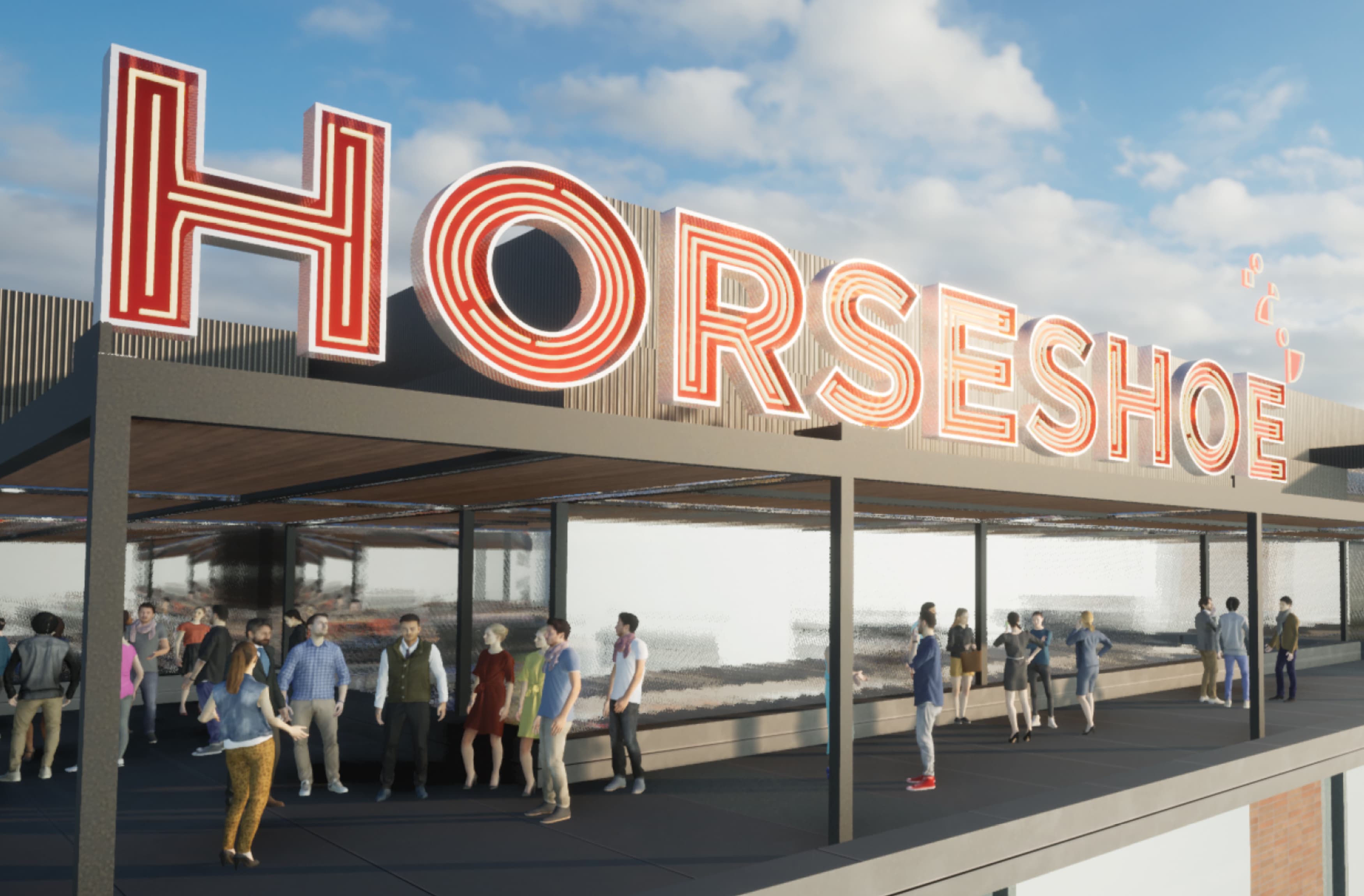
Research Triangle Park, Client: Research Triangle Foundation, Architect: Duda Paine
Another way to better understand experience design is to review examples of experience graphics that can be involved in this work. We have outlined five commonly seen types of experience graphics below, though there are many other kinds of graphics you may encounter in XGD.
Experience branding graphics can harness a project’s storytelling potential. They reinforce organizational presence and create cohesive brand experiences within a given space, encompassing identity signage, information identity, amenity identity, entry door graphics, advertising kiosks, and product integration that communicate the unique character and values of the organization.
These graphics transform abstract brand attributes into tangible environmental elements, using materials, colors, and forms that embody the brand's essence. From monumental entry features that make powerful first impressions to subtle architectural details that reinforce brand consistency throughout a space, these graphics ensure every touchpoint reinforces the organizational narrative. The most successful branding graphics go beyond simple logo placement to create multi-sensory experiences that visitors remember long after they leave.
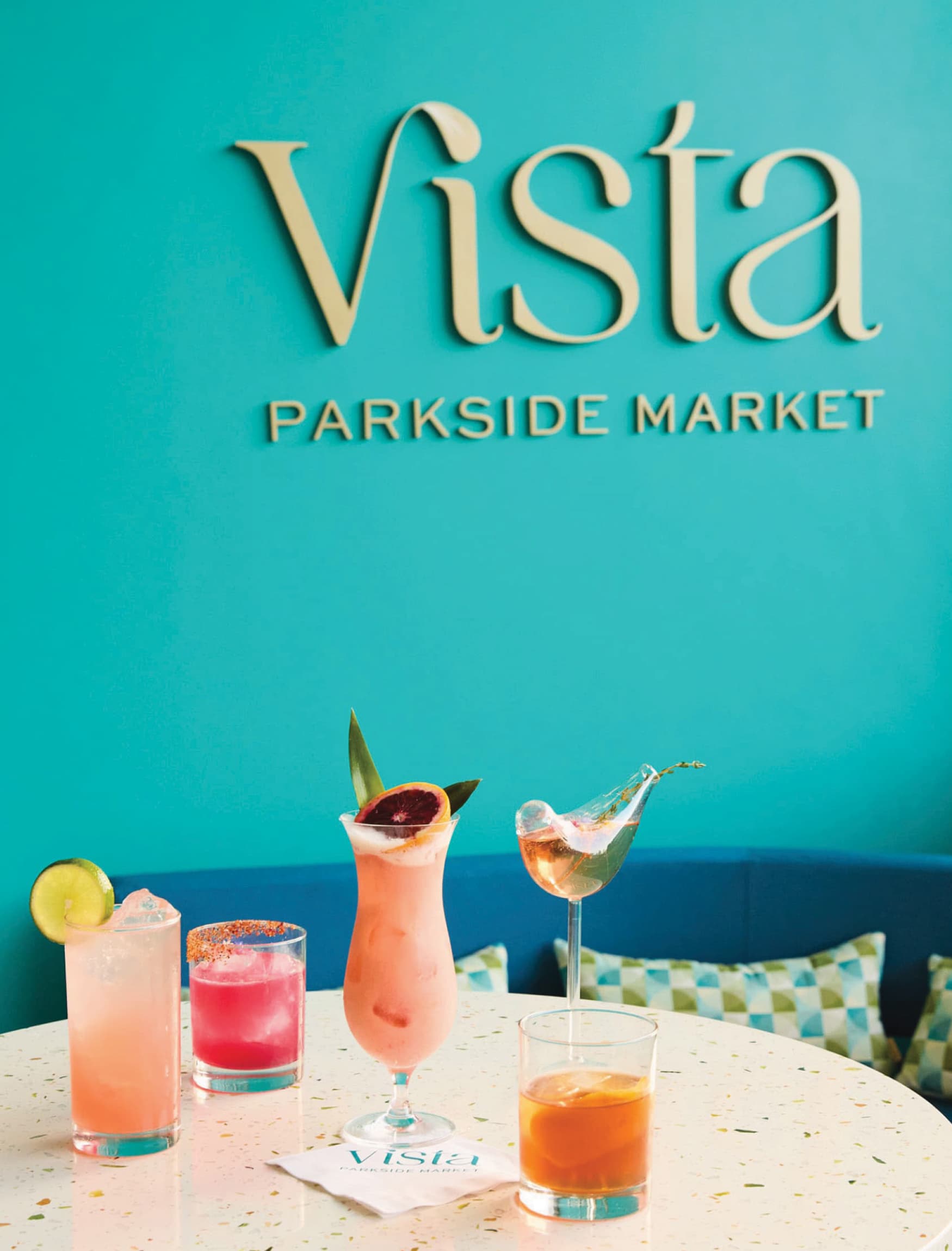

Parkside Market, Client: Levy Restaurants, Downtown Disney, Architect: AO Architects
Placemaking, which focuses on creating vibrant public spaces that strengthen communities through collaborative planning and design processes, is often a central component of experience graphic design. While placemaking emphasizes community engagement, programming, and activation of spaces, experience design provides the visual language, wayfinding systems, storytelling, and branded interiors that help people understand, navigate, and connect with these activated places. Together, they transform underutilized areas into destinations that reflect community identity and encourage ongoing use.
Such placemaking graphics can work to celebrate and elevate communal achievements and to communicate organizational history and value systems. They include donor recognition, art programs with selection and coordination, timelines, and historic displays that tell the story of the space and honor its communal nature. They are integral in the creation of spaces that feel both rooted and relevant, encouraging people to pause, engage, and develop emotional connections with their surroundings. These specialty graphics should form a deep resonance with the community’s past while simultaneously heralding its aspirational future.
Wayfinding graphics help people orient themselves and move through spaces safely and efficiently by ensuring clear navigation throughout the built environment. These can include any combination of: site monumentation, directional signage, directories, identity signage, maps, and vehicular wayfinding and parking graphics.
Effective wayfinding graphics move beyond the scope of simple directional arrows to create intuitive navigation systems that reduce anxiety and enhance the visitor experience through clear hierarchies of information, consistent visual language, and strategic placement at energetic nexuses.
Modern wayfinding graphics increasingly incorporate universal design principles and digital integration, ensuring accessibility across demographics while providing options for real-time updates and personalized routing. The best wayfinding systems become nearly invisible when working properly, allowing visitors to seamlessly enjoy the journey to their destination.

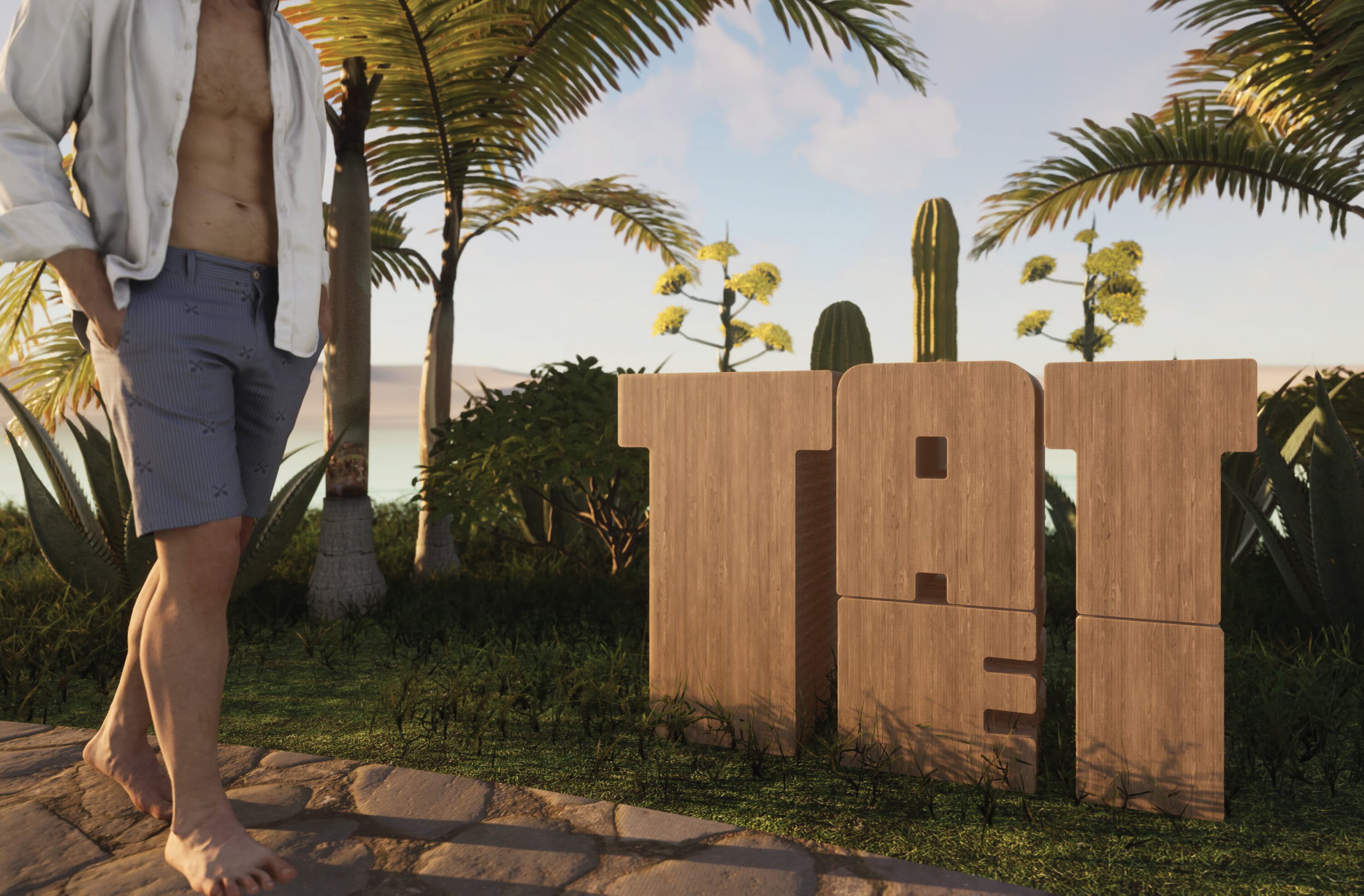
Omni Pontoque, Client: Omni Resorts & Hotels, Architect: HKS Architects
Experience graphic design often incorporates branded interiors, which concentrate specifically on translating brand identity into physical spaces to create immersive experiences that reinforce brand values and messaging. Yet it can encompass a broader scope that includes wayfinding, public art, cultural storytelling, and community connection beyond commercial brand expression. Experience design may serve branded interiors but also extends to civic spaces, cultural institutions, and public realm projects where brand identity represents community values.
Whether they are bold or subtle, branded interior elements shape the atmosphere and physical feel of a space. They include furniture, fixtures, and equipment (FF&E), sensory design components (sounds, scents, texture, and lighting), dimensional features and placemaking elements, as well as wall graphics and murals that create immersive and memorable connections. These graphics should work to activate every interior facet that would otherwise be regarded as mundane, redefining each physical element into an opportunity for authentic brand elevation.
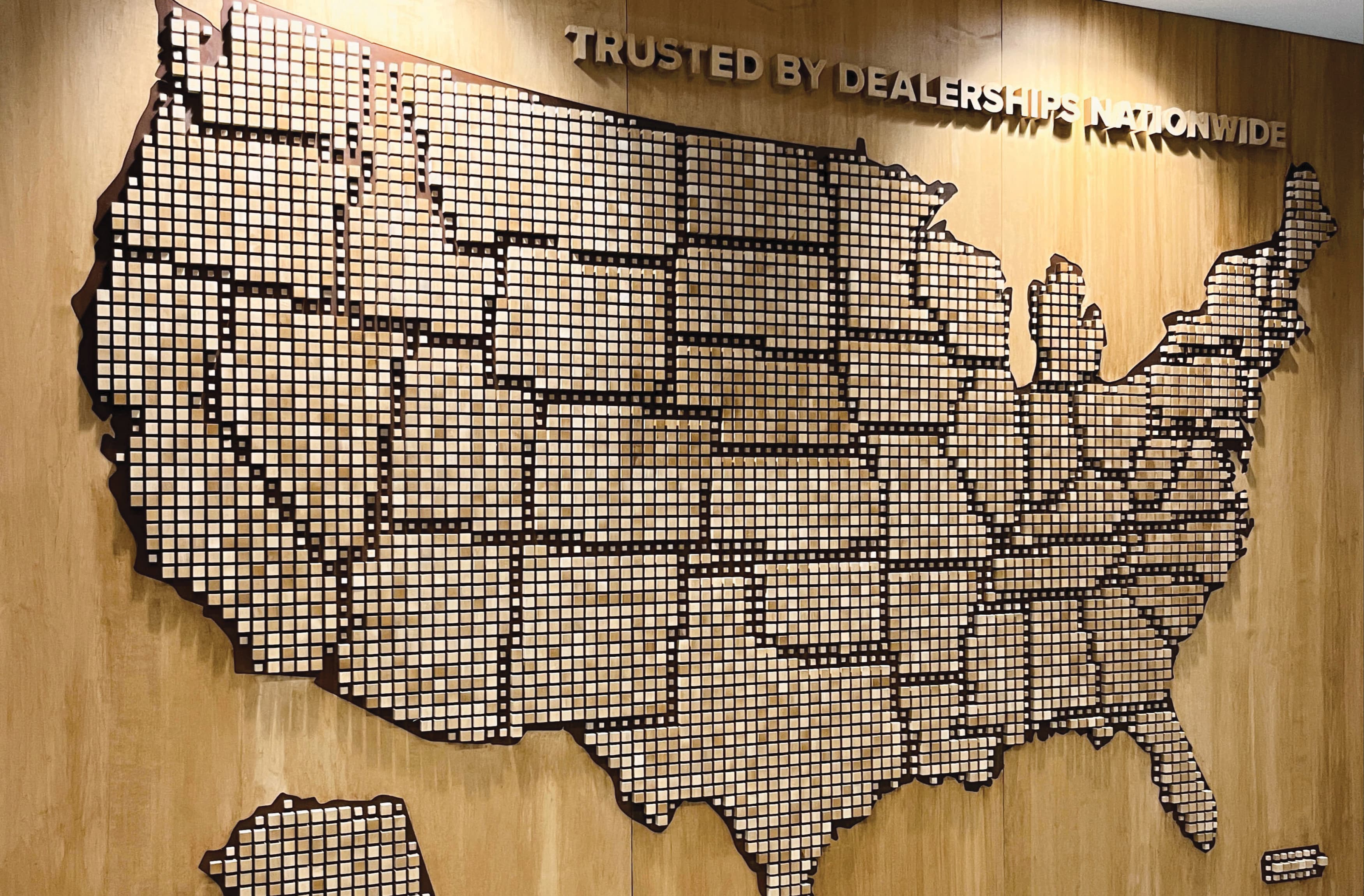
JM Family Enterprises Headquarters, Client: JM Family Enterprises
Our experience designers help enhance people’s experiences with places on multiple levels: functional, emotional, sensory, and experience. We inspire users to do more in a space, engage with it deeply, and make a lasting connection. Locations become destinations that people want to share with others and come back to themselves.
At RSM Design, we are passionate about creating places that spark joy and bring people together. We are committed to creating memorable destinations that engage people in meaningful ways.